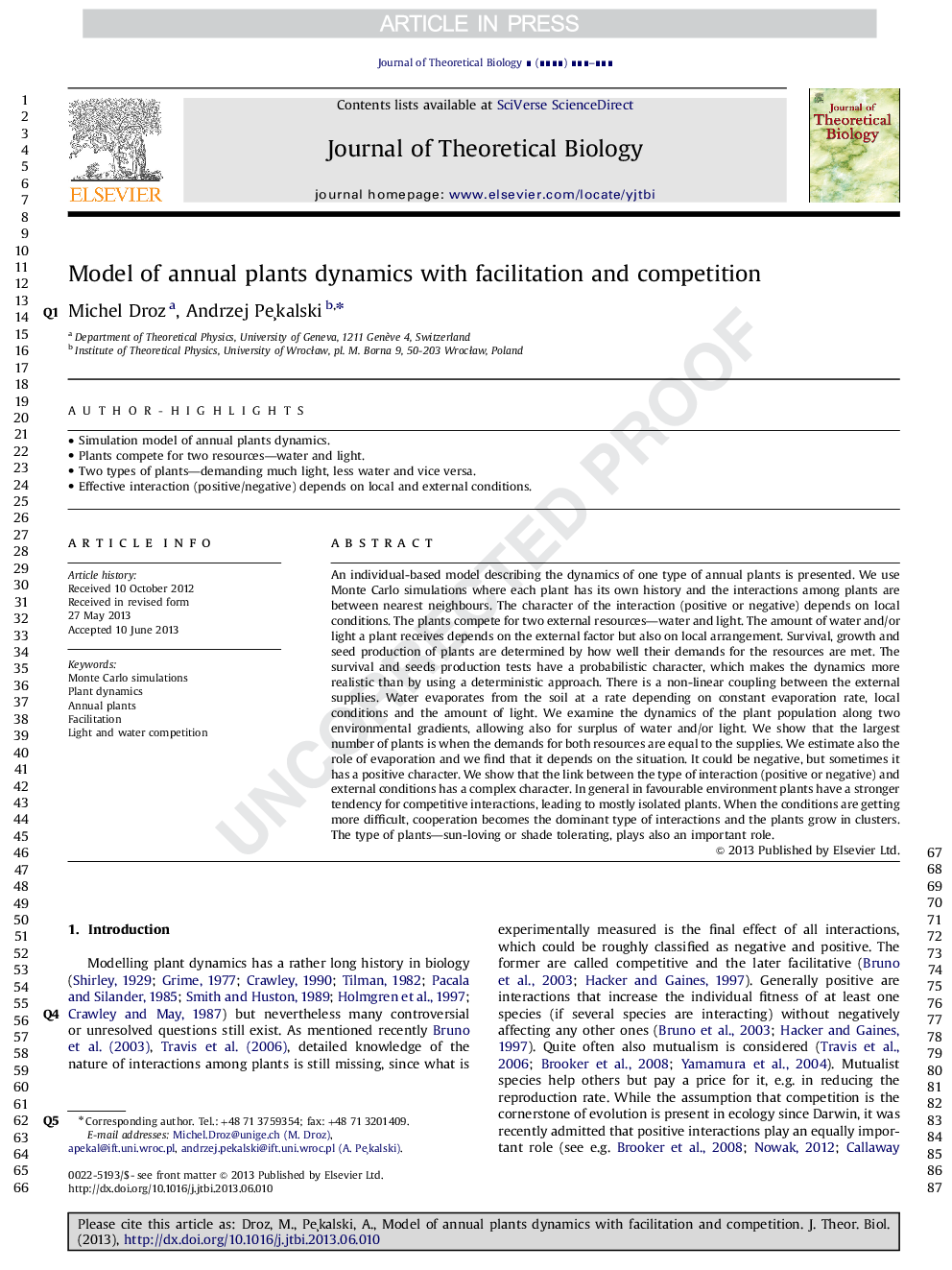| Article ID | Journal | Published Year | Pages | File Type |
|---|---|---|---|---|
| 6370668 | Journal of Theoretical Biology | 2013 | 12 Pages |
Abstract
An individual-based model describing the dynamics of one type of annual plants is presented. We use Monte Carlo simulations where each plant has its own history and the interactions among plants are between nearest neighbours. The character of the interaction (positive or negative) depends on local conditions. The plants compete for two external resources-water and light. The amount of water and/or light a plant receives depends on the external factor but also on local arrangement. Survival, growth and seed production of plants are determined by how well their demands for the resources are met. The survival and seeds production tests have a probabilistic character, which makes the dynamics more realistic than by using a deterministic approach. There is a non-linear coupling between the external supplies. Water evaporates from the soil at a rate depending on constant evaporation rate, local conditions and the amount of light. We examine the dynamics of the plant population along two environmental gradients, allowing also for surplus of water and/or light. We show that the largest number of plants is when the demands for both resources are equal to the supplies. We estimate also the role of evaporation and we find that it depends on the situation. It could be negative, but sometimes it has a positive character. We show that the link between the type of interaction (positive or negative) and external conditions has a complex character. In general in favourable environment plants have a stronger tendency for competitive interactions, leading to mostly isolated plants. When the conditions are getting more difficult, cooperation becomes the dominant type of interactions and the plants grow in clusters. The type of plants-sun-loving or shade tolerating, plays also an important role.
Related Topics
Life Sciences
Agricultural and Biological Sciences
Agricultural and Biological Sciences (General)
Authors
Michel Droz, Andrzej PÈ©kalski,
